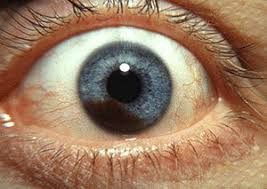Definition
Amaurosis fugax is a temporary loss of vision in one or both eyes due to decreased blood flow to the retina. The retina is the layer inside the eyeball that functions to receive incoming light. Amaurosis fugax is not a standalone disease but a symptom of other conditions. The incidence of amaurosis fugax worldwide is relatively low and more common in adults than children. However, if it occurs in children, the causes usually differ from those in adults.
Causes
The causes of amaurosis fugax vary and can originate from the eyes or other body systems. Generally, the causes of amaurosis fugax are divided into four categories: circulatory, nervous, or ocular systems. Amaurosis fugax that affects only one eye typically has different causes than amaurosis fugax that affects both eyes.
Monocular amaurosis fugax (one eye) can be caused by:
- Stiffness of blood vessel muscles
- Problems with large blood vessels in the neck
- Blockage of blood vessels
- Migraine
- Damage to the optic nerve
- Glaucoma (Increased intraocular pressure)
Meanwhile, binocular amaurosis fugax (both eyes) can be caused by:
- TIA (transient ischemic attack, mild-stroke)
- Migraine
- Seizures in the part of the brain that controls vision
- Damage to the optic nerve
- Multiple sclerosis, which is nerve damage caused by the immune system attacking the nerves themselves, can also cause amaurosis fugax.
In addition to the causes mentioned above, other conditions can cause amaurosis fugax. Overeating can be a cause if there is already reduced blood flow to the eyes due to narrowed blood vessels or cancer. Furthermore, exercise can also be a cause due to excessive heat exposure, which slows nerve conduction. There is also amaurosis fugax, which depends on the direction of eye movement and can cause eyeball abnormalities. Anything that causes pressure on the brain, such as bleeding from head trauma and brain tumors, can also be a cause.
Blockages in blood vessels as a cause of amaurosis fugax typically occur in adults. In children, the causes of amaurosis fugax are usually less severe. The most common cause of amaurosis fugax in children is migraine. However, other causes can include trauma. Traumatic events can cause bleeding in the head that presses on the brain, resulting in amaurosis fugax.
Risk factor
The risk factors for amaurosis fugax depend on its cause. For monocular amaurosis fugax caused by decreased blood flow, a significant risk factor is the presence of narrowed blood vessels in the neck.
Other risk factors include high blood pressure, high cholesterol levels, irregular heart rhythms, diabetes, and blood clotting disorders. Additionally, habits that increase the risk of stroke and heart disease, such as smoking, are significant risk factors. Substance abuse, such as alcohol and cocaine, can also increase the risk of amaurosis fugax. Unavoidable risk factors for amaurosis fugax include aging; the older you get, the higher the risk of experiencing amaurosis fugax.
Symptoms
The symptoms of amaurosis fugax generally occur briefly, with vision loss lasting from a few seconds to a few minutes, so patients usually see a doctor without symptoms. However, in some cases, this vision loss can last longer.
Diagnosis
The diagnosis of amaurosis fugax aims to determine the condition causing the symptom. If you visit a doctor, they will ask for detailed information about the vision loss event, especially what you felt, how long it lasted, and whether it affected one or both eyes. The doctor will also inquire about your medical history, such as high blood pressure, diabetes, high cholesterol, migraines, and other diseases related to blood vessels. The doctor will also ask about similar conditions and symptoms in your family history.
The doctor will measure your blood pressure to identify if high blood pressure is influencing amaurosis fugax. They will also examine visual acuity, fields, intraocular pressure, and eye movements. The doctor may also inspect the inside of the eye using tools like a funduscope or slit lamp. Since amaurosis fugax can be caused by glaucoma, the doctor will also conduct examinations related to glaucoma.
In addition to direct examinations, the doctor may conduct laboratory and imaging tests. Laboratory tests may include blood tests, clotting factors, urine tests, and ESR (erythrocyte sedimentation rate) and CRP (C-reactive protein, which increases with inflammation). These tests can help identify possible causes of amaurosis fugax from blood clotting disorders or vascular inflammation. Other tests, such as blood sugar and cholesterol levels, can be performed to identify risk factors like diabetes and high cholesterol.
Imaging tests such as MRI (magnetic resonance imaging) of the brain or angiographic imaging of blood vessels may be done if there is a suspicion of brain problems or blood vessel blockages. The doctor may also perform a Doppler ultrasound of the neck vessels to check for narrowing of these vessels. An EEG (electroencephalogram) may be conducted if amaurosis fugax occurs in both eyes simultaneously or if there is a history of seizures.
Management
The treatment of amaurosis fugax depends on its cause. If migraines cause it, medications for migraines will be administered. If a blood vessel blockage is suspected, you may be referred for treatment to reduce blood clotting or for surgery on the neck blood vessels. If inflammation of the blood vessels is suspected, the doctor may prescribe medications to reduce the inflammation.
Complications
Generally, the complications of amaurosis fugax vary based on its underlying cause. Children typically experience better recovery and fewer complications. In contrast, adults often face more chronic and serious causes of amaurosis fugax. For instance, if it stems from a blockage in the eye's blood vessels, the likelihood of a stroke rises. Furthermore, amaurosis fugax can serve as an early indicator of damage to the eye's blood vessels. Without treatment, this vascular damage may result in blindness.
When to see a doctor?
If you experience sudden vision loss and have a history of conditions such as high blood pressure, diabetes, high cholesterol, or blood clotting disorders, see a doctor immediately. Suppose your child complains of similar symptoms, especially if accompanied by a headache. In that case, you should also take them to a doctor to further examine and manage their condition.
Looking for more about other diseases? Click here!
- dr Ayu Munawaroh, MKK
Al Othman, B., Lee, A., & Kini, A. (2021). Amaurosis Fugax (Transient Vision Loss) - EyeWiki. Retrieved 29 October 2021, from https://eyewiki.aao.org/Amaurosis_Fugax_(Transient_Vision_Loss).
Amaurosis fugax: MedlinePlus Medical Encyclopedia. (2021). Retrieved 29 October 2021, from https://medlineplus.gov/ency/article/000784.htm
Tatham, A. (2019). Transient Vision Loss (TVL) and Amaurosis Fugax: Overview, Pathophysiology, Etiology. Retrieved 29 October 2021, from https://emedicine.medscape.com/article/1435495-overview#a1












